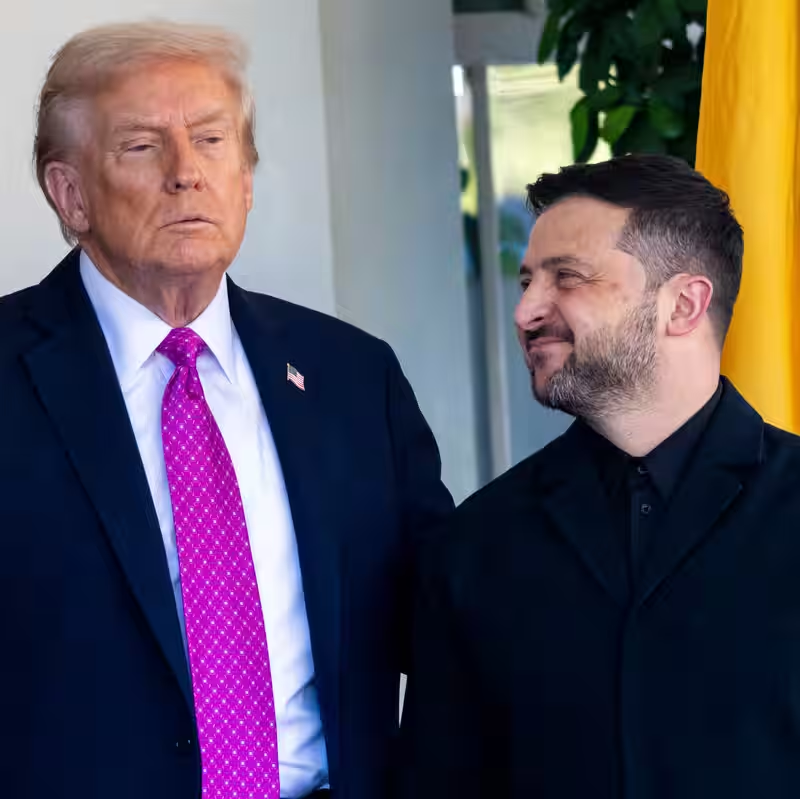Table of Contents
- No Breakthrough in White House Meeting
- European Leaders Rally Behind Zelensky
- Putin Stands Firm on Territorial Demands
- Trump’s Evolving Position on Ukraine
- Diplomatic Impasse Deepens
- Sources
No Breakthrough in White House Meeting
Despite over two hours of intense discussion, the recent meeting between U.S. President Donald Trump and Ukrainian President Volodymyr Zelensky yielded no tangible progress toward a cease-fire in the ongoing war with Russia. The Friday encounter at the White House was described by insiders as “contentious,” with Trump initially pressing Zelensky to concede territory in eastern Ukraine—a move Zelensky firmly rejected.
According to a senior European official with direct knowledge of post-meeting communications, Zelensky informed European allies that Trump had softened his stance by the end of the conversation and ultimately accepted Ukraine’s refusal to surrender land.
European Leaders Rally Behind Zelensky
On Tuesday, 11 European leaders—including representatives from the UK, France, Germany, Finland, and the European Union—issued a joint statement reaffirming support for Ukraine’s position. They backed an immediate cease-fire along current battle lines, echoing Trump’s public stance while carefully avoiding criticism of the U.S. president.
“We strongly support President Trump’s position that the fighting should stop immediately, and that the current line of contact should be the starting point of negotiations.”
The statement also called for increased economic pressure on Russia’s defense sector to compel President Vladimir Putin to the negotiating table.
Putin Stands Firm on Territorial Demands
Russia has not budged from its long-standing demand: before any cease-fire, Ukraine must formally surrender parts of the Luhansk and Donetsk regions not yet under Russian control. This territory amounts to nearly 2% of Ukraine’s total land area—double what Moscow has gained through combat in the past two years.
In a phone call with Trump just before the Zelensky meeting, Putin reportedly warned against supplying Ukraine with Tomahawk cruise missiles. No such weapons were offered during the White House talks.
Trump’s Evolving Position on Ukraine
Publicly, Trump painted the meeting as “cordial” and denied pressuring Zelensky on territorial concessions. On social media and aboard Air Force One, he reiterated his call for both sides to “stop where they are”—a position that aligns more closely with Kyiv than with Moscow.
“Enough blood has been shed, with property lines being defined by War and Guts,” Trump posted, emphasizing battlefield realities over political redrawing of borders.
Zelensky, for his part, chose to frame the encounter positively: “His message, in my view, is positive: that we stand where we stand on the front line.”
Diplomatic Impasse Deepens
While a potential Trump-Putin summit in Budapest was floated—with Secretary of State Marco Rubio and Russian Foreign Minister Sergey Lavrov tasked with preparations—Moscow abruptly delayed even preliminary talks.
“We need preparation, serious preparation,” Kremlin spokesperson Dmitry Peskov stated, effectively shelving any near-term diplomatic breakthrough.
Lawrence Freedman, emeritus professor of war studies at King’s College London, summed up the situation as “a profound sense of déjà vu.” He noted the core disagreement remains: Trump wants a cease-fire first; Putin insists on a political settlement upfront.
With front lines still fluid and trust scarce, even defining a cease-fire line poses a major challenge.




